When we gaze skyward during migration season, we might catch a glimpse of geese flying in their characteristic V-formation. But what many don’t realize is just how extraordinarily high these birds can soar. Geese are remarkable high-altitude flyers, with capabilities that have astounded scientists and aviation enthusiasts alike. Their ability to navigate the thin air of extreme elevations represents one of nature’s most impressive adaptations. This article explores the fascinating world of high-flying geese and reveals altitude records and adaptations that might leave you looking at these common birds with newfound respect.
Bar-headed Geese: The Ultimate High-flyers
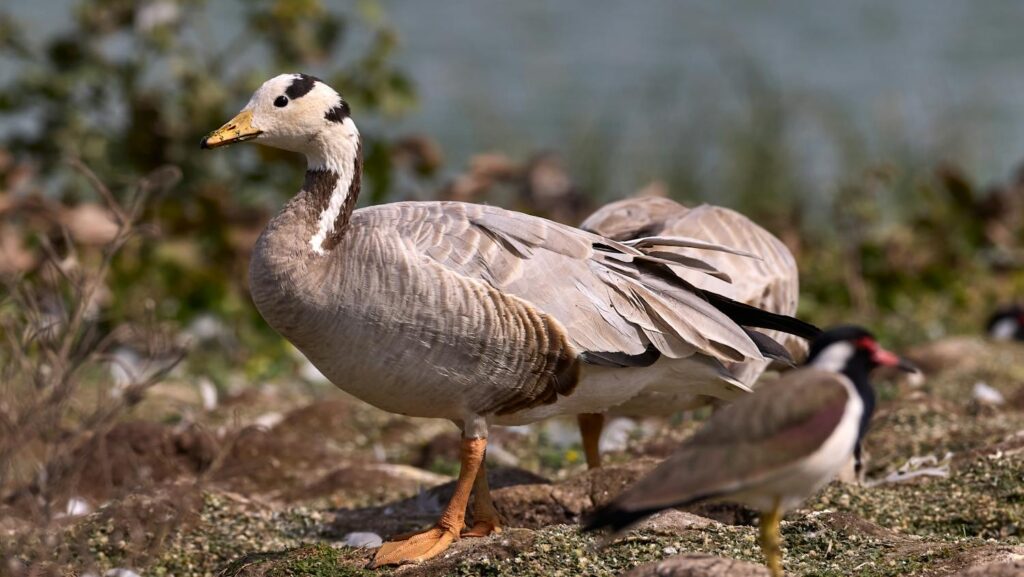
The uncontested champions of high-altitude avian flight are the bar-headed geese (Anser indicus), which hold the record for the highest-flying birds in the world. These remarkable creatures regularly migrate over the Himalayan mountains, flying at altitudes exceeding 20,000 feet (6,096 meters). Their twice-yearly journey takes them from their breeding grounds in Mongolia and central Asia to their wintering grounds in the lowlands of India, requiring them to cross the world’s highest mountain range. What makes this feat even more impressive is that they accomplish this without the pressurized cabins or oxygen tanks that human climbers require at similar heights. Scientists have documented bar-headed geese flying at 29,000 feet (8,839 meters) above sea level – approximately the height of Mount Everest.
The Radar Evidence: Higher Than We Thought
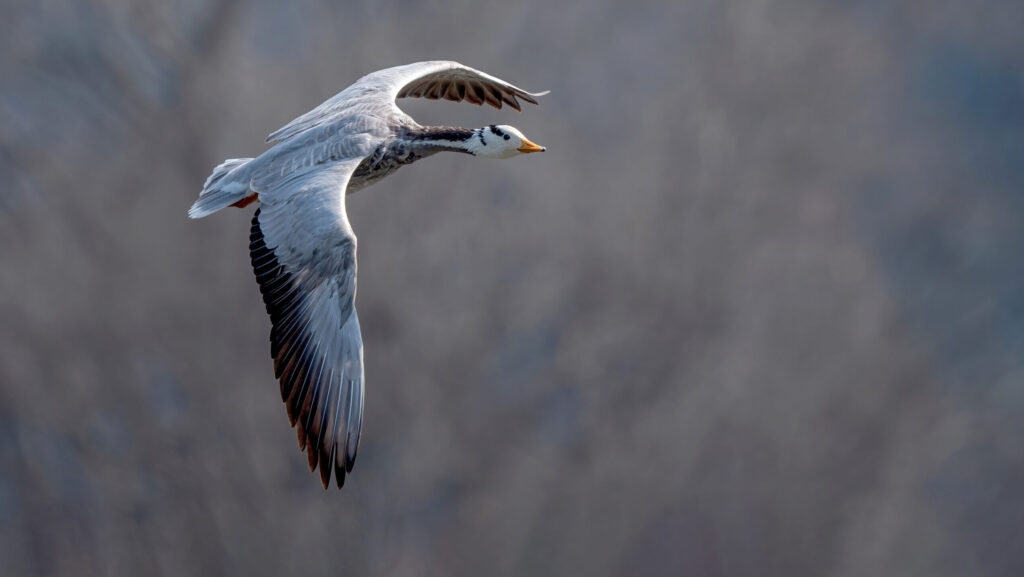
Modern tracking technology has revolutionized our understanding of goose flight capabilities. Radar studies have shown that some goose species routinely fly at altitudes much higher than previously believed, with some migratory flocks recorded at elevations between 15,000-20,000 feet (4,572-6,096 meters). These discoveries came as a surprise to many ornithologists who had previously estimated more modest flight heights based on visual observations alone. Weather radar systems, originally designed to track storm patterns, have become invaluable tools for monitoring bird migration patterns and altitudes. The data collected has forced scientists to revise their understanding of the physiological capabilities of these birds, as many species are now known to fly at heights where human climbers would require supplemental oxygen.
Oxygen Efficiency: Breathing in Thin Air

The ability of geese to function in oxygen-poor environments stems from remarkable adaptations in their respiratory systems. At high altitudes where oxygen levels can be just a third of those at sea level, geese employ specialized hemoglobin that binds oxygen more efficiently than that of most other birds or mammals. Their lungs extract oxygen from the air with extraordinary efficiency through a unique counter-current exchange system. Additionally, geese have a higher density of capillaries in their flight muscles, allowing for better oxygen delivery during intense exertion. These adaptations collectively enable them to maintain metabolic activity in conditions that would cause unconsciousness in humans without supplemental oxygen.
The Hummingbird Connection: Unexpected Altitude Competitors
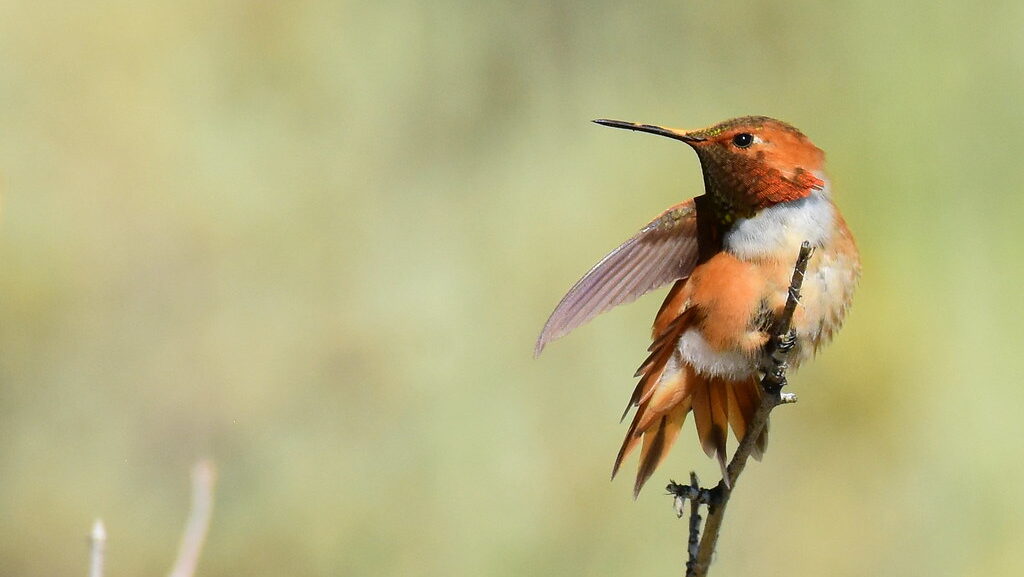
While geese hold impressive altitude records, they face unexpected competition from the rufous hummingbird (Selasphorus rufus), despite the dramatic size difference between these species. These tiny birds, weighing less than a nickel, have been recorded flying at altitudes up to 12,500 feet (3,810 meters) during their migrations. The comparison between geese and hummingbirds highlights a fascinating aspect of high-altitude flight: it’s not merely about size or strength but about specific physiological adaptations. Both these species have evolved remarkably efficient respiratory and circulatory systems that allow them to function in thin air. This convergent evolution demonstrates how different evolutionary pathways can lead to similar capabilities in otherwise vastly different species.
Night Flight: The Altitude Advantage of Darkness

Many species of geese prefer to fly at their highest altitudes during nighttime hours, a behavior that has puzzled researchers until relatively recently. Scientists now understand that nighttime offers several advantages for extreme high-altitude flight, including cooler temperatures that reduce the risk of overheating during intense exertion. The cooler nighttime air is also typically more stable and less turbulent, creating more favorable flying conditions at extreme heights. Thermal imaging studies have revealed that some goose species may gain as much as 3,000-5,000 additional feet (914-1,524 meters) of altitude during night flights compared to daytime journeys along the same migratory routes. This nocturnal preference helps explain why many record-breaking altitude observations come from night radar rather than visual daytime sightings.
Canada Geese: Higher Than You Think
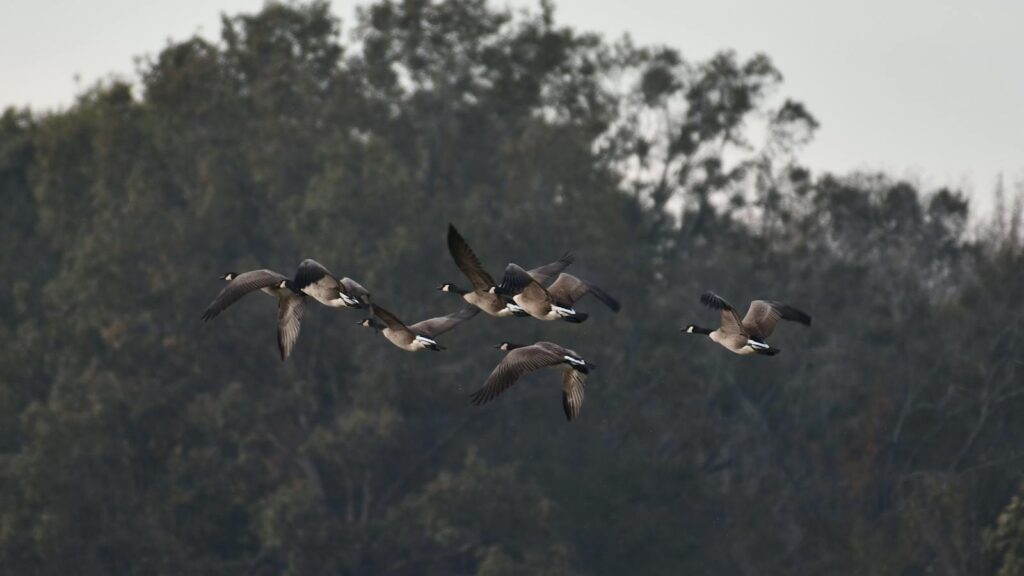
The common Canada goose (Branta canadensis), familiar to many North Americans, might seem less remarkable than its Himalayan relatives, but these birds are still impressive high-flyers. Canada geese typically migrate at altitudes between 3,000-5,000 feet (914-1,524 meters), but GPS tracking studies have recorded individuals flying as high as 9,000 feet (2,743 meters) during long-distance migrations. These substantial altitudes are particularly noteworthy considering the weight of these birds, which can reach 14 pounds (6.3 kg) for large males. Their ability to sustain flight at these heights while carrying such weight demonstrates the remarkable power-to-weight ratio and efficient wing design that characterizes the goose family. Canada geese use these high-altitude flights primarily during their longest migration legs, where the reduced air resistance and favorable winds justify the energy expenditure of climbing to such heights.
Weather Exploitation: Riding the Jet Stream
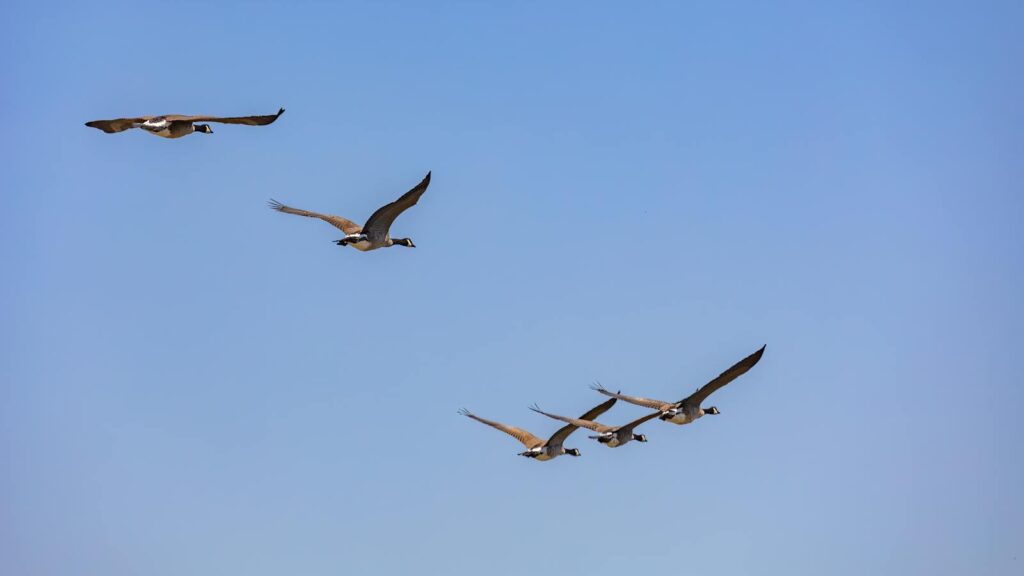
One key reason geese fly at extreme altitudes is to take advantage of powerful high-altitude air currents, particularly the jet stream. By positioning themselves within these fast-moving air currents, geese can significantly increase their ground speed while reducing energy expenditure. Research has shown that bar-headed geese can strategically enter these currents to achieve ground speeds exceeding 80 miles per hour (129 km/h) with minimal flapping effort. Weather radar tracking has revealed that geese can sense upcoming weather fronts and adjust their altitude accordingly, sometimes climbing or descending thousands of feet to find the most favorable winds. This weather intelligence represents a sophisticated navigation system that enables these birds to optimize their migration efficiency in ways that human pilots have only achieved with modern technology.
The Cost of High Altitude: Energy Trade-offs
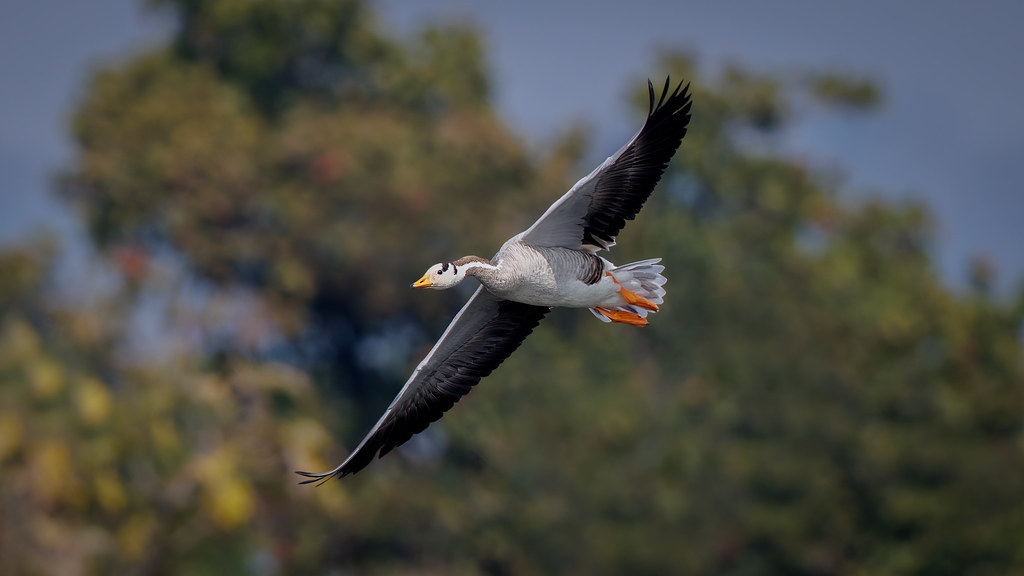
Flying at extreme altitudes comes with significant energy costs for geese, creating a complex physiological trade-off. The climb to high altitudes requires substantial energy expenditure, with birds needing to generate enough lift to overcome gravity in increasingly thin air. Studies using heart rate monitors and metabolic sensors have shown that geese can experience up to a 30% increase in energy consumption during the climbing phase of flight. However, once at cruising altitude, they benefit from reduced air resistance and favorable tailwinds that can make the journey more efficient overall. This balance between climb cost and cruise benefit explains why geese don’t always fly at their maximum possible altitude – they make strategic decisions based on wind conditions, journey length, and energy reserves.
The Altitude Records We Can’t Explain
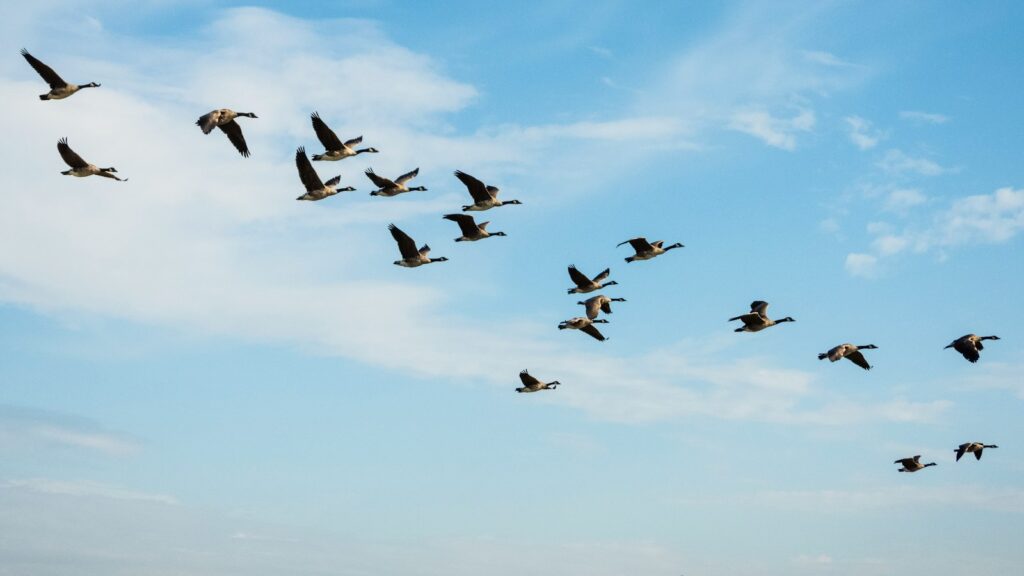
Some altitude records of geese defy current scientific understanding and remain mysterious. Radar observations have occasionally detected what appear to be goose flocks at altitudes approaching 33,000 feet (10,058 meters) – heights that challenge our understanding of avian physiology. At such extreme altitudes, temperatures can plummet below -40°F (-40°C), and oxygen levels drop to less than 30% of those at sea level. While these exceptional readings are rare and difficult to verify through direct observation, they suggest that under certain circumstances, some geese may be capable of even more remarkable feats than currently documented. Researchers speculate that unusual atmospheric conditions or particularly strong motivating factors might drive these extreme altitude events.
Temperature Regulation at Extreme Heights
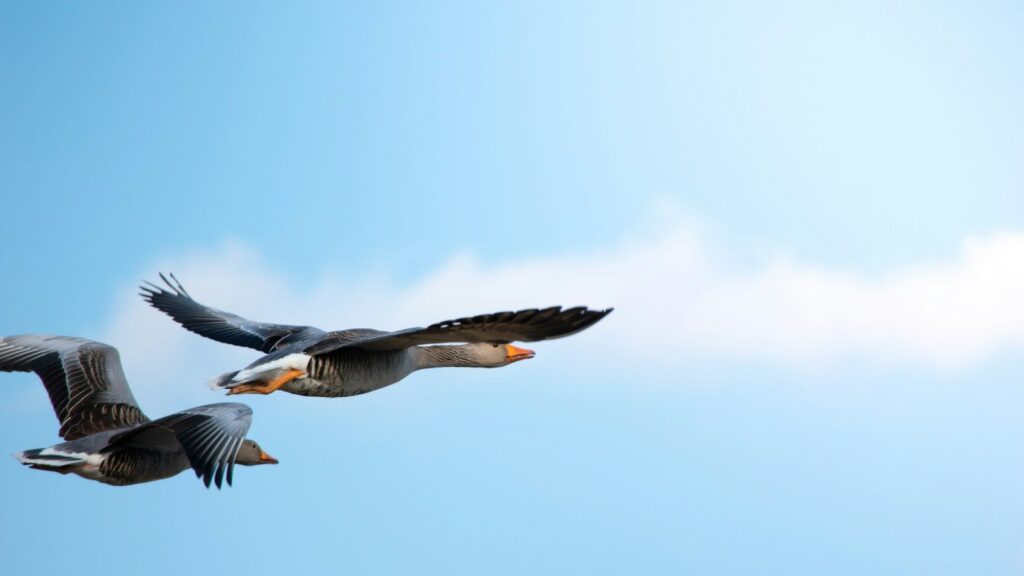
The challenge of maintaining body temperature represents one of the most significant obstacles for geese flying at high altitudes. At 20,000 feet (6,096 meters), ambient temperatures typically range from -20°F to -40°F (-29°C to -40°C), creating conditions that would quickly lead to hypothermia in most animals. Geese address this challenge through multiple adaptations, including specialized down feathers that trap body heat with remarkable efficiency. Thermal imaging studies have revealed that geese can maintain core body temperatures of approximately 104°F (40°C) even when flying through air that is more than 140°F (60°C) colder. Additionally, they possess a countercurrent heat exchange system in their legs and feet that prevents excessive heat loss through these exposed extremities while still allowing sufficient blood flow to prevent tissue damage.
Evolution of High-Altitude Flight

The remarkable high-altitude capabilities of geese didn’t develop overnight but represent millions of years of evolutionary adaptation. Genetic studies of bar-headed geese show evidence of strong selection pressure on genes related to oxygen transport and metabolism over approximately 2-3 million years. This timeframe coincides with the geological uplift of the Himalayan mountains, suggesting that these birds evolved their extreme altitude capabilities in direct response to their changing environment. Comparative genomic research between high-flying goose species and their lower-altitude relatives has identified specific genetic mutations that enhance oxygen binding capacity and cellular energy production. These evolutionary adaptations demonstrate how environmental challenges can drive the development of extraordinary capabilities through natural selection over time.
Human Applications: Learning from Goose Physiology
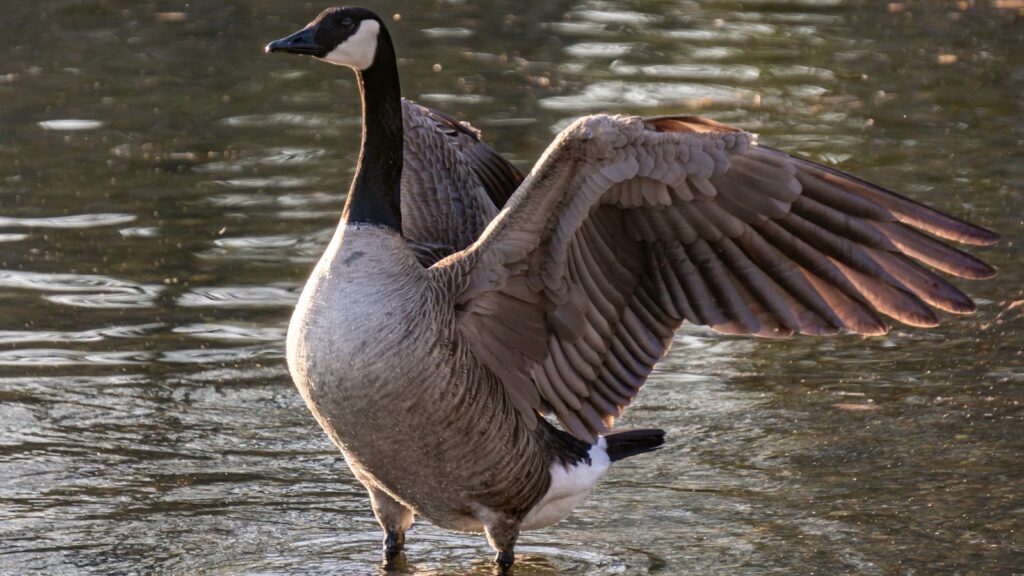
The unique physiological adaptations that allow geese to fly at extreme altitudes have sparked interest in medical and aviation research communities. Scientists studying human adaptation to high altitudes have examined goose hemoglobin structure to better understand oxygen transport efficiency in low-oxygen environments. These studies have contributed to developments in treatments for altitude sickness and certain respiratory conditions. Additionally, aerospace engineers have drawn inspiration from the energy-efficient wing designs and formation flying techniques of geese to improve aircraft fuel efficiency. The V-formation flying pattern of geese, which reduces energy expenditure by up to 24% for birds following the leader, has influenced both military and commercial aviation formation protocols for long-distance flights.
Future Research: The Mysteries That Remain

Despite significant advances in our understanding of high-altitude goose flight, many questions remain unanswered. Scientists are currently developing ever-more sophisticated tracking technologies, including miniaturized sensors that can monitor physiological parameters such as heart rate, respiration, and even blood oxygen levels in real-time during flights. These advancements promise to reveal even more about how these birds accomplish their remarkable feats. Questions about how geese navigate at night, how they predict favorable high-altitude wind patterns, and the precise mechanisms of their oxygen utilization at the cellular level remain active areas of research. As climate change alters atmospheric conditions and wind patterns, researchers are also studying how these changes might impact the altitude capabilities and migration patterns of these remarkable birds in the coming decades.
Conclusion
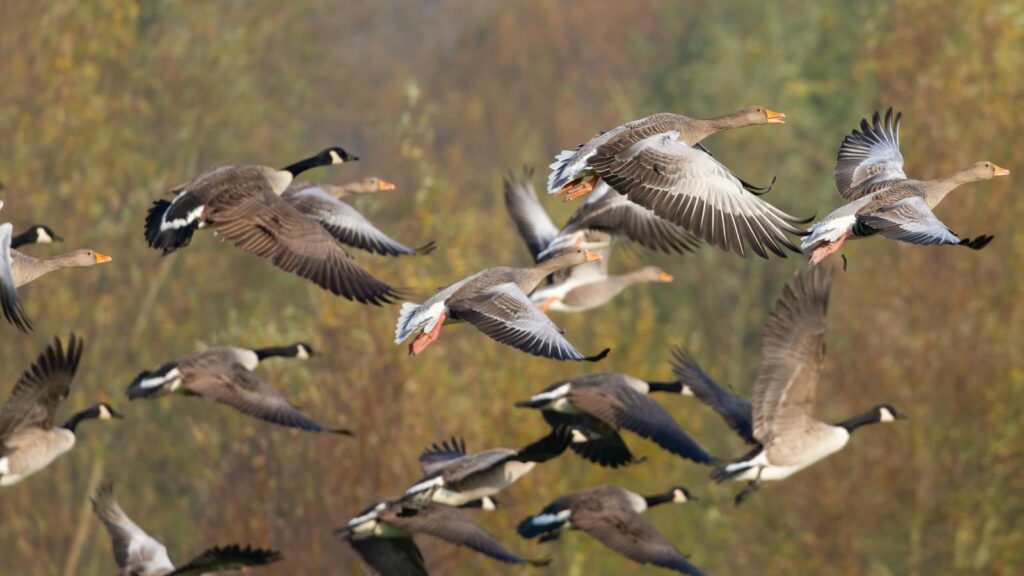
The altitude capabilities of geese represent one of nature’s most impressive achievements in biological engineering. From the bar-headed goose’s Himalayan crossings to the strategic weather exploitation of Canada geese, these birds demonstrate physiological adaptations that push the boundaries of what we thought possible for vertebrate life. Their ability to function in the oxygen-poor, frigid conditions of the upper atmosphere without the technological aids that humans require speaks to the remarkable power of evolutionary adaptation. As we continue to study these high-flying marvels, we not only gain insight into their remarkable biology but also potential applications for human medicine, aviation, and our understanding of how life adapts to extreme environments. The next time you see a flock of geese overhead, remember that these common birds harbor extraordinary capabilities that continue to surprise even the scientists who study them.
